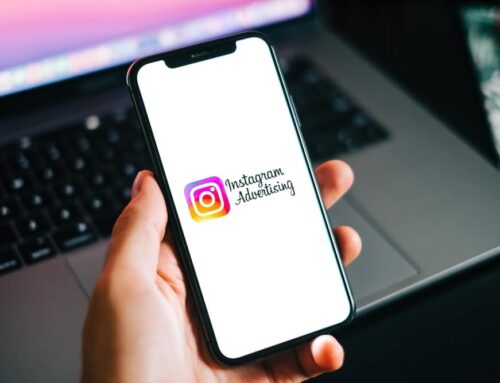Back in 1971, when the first email was sent by computer engineer Ray Tomlinson, no one could have predicted it would become an effective digital marketing strategy to interact with existing and potential customers.
With the total number of 2.5 billion email users worldwide, email marketing is a great tool to reach out to your target audience, deliver a brand message, keep in touch with your readers, acquire customers, and even provide customer support, no matter what your business niche is.
But here’s the deal:
An average business user sends and receives 126 emails per day in 2019.
With a great number of bulk mails and unsolicited spam, your letter may get buried in the inbox or annoy your potential customers. In other words, it takes knowledge and practice to run a successful email marketing campaign.
Why bother about email marketing in 2020?
While it seems difficult to cut through the noise with email marketing, 59% of marketers still see the most ROI from email. Why? The numbers speak for themselves:
- 61% of customers want brands to provide them with information via email
- 59% of consumers claim that marketing emails influence their purchase decisions
- 49% of users say that they want to receive promotional emails from their favorite brands on a weekly basis
Interested in making the most out of email marketing? Read on to learn what six trends can help you drive more sales.
Six email marketing trends that can drive more sales in 2020
1) Minimalist email design
Since users receive a great number of brand emails, it’s crucial for any business to stand out from the crowd. When it comes to creating eye-catching emails, most people believe that bright and colorful images can attract attention. However, plain text emails are better as they are more authentic and clear. Thus, it’s no wonder that minimalist email design helps to sell more.
In the era of paid posts and overly-polished ads, customers crave authenticity, so sending simple emails helps to humanize your brand and establish an emotional connection with customers. That also means that companies can stay one step ahead of their competitors who focus on their products, not the customers and their needs. To sum up, the minimalist email design helps to:
- Optimize email load time
- Deliver a polished brand message
- Keep a focus on the offer, not the image
With minimalist email design, it doesn’t take much time or effort to get the main idea of the message. Moreover, the company helps both offline and online shoppers make the most out of the offer: Since 70% of consumers report using an emailed discount within, it also increases sales.
When you send minimalist design emails, you gain more customers’ attention to the offer, not the image. As a result, you share a clear brand message with your audience that helps to sell more.
2) Hyper-personalized automated campaigns
In 2020, email marketing will be not about having a one-size-fits-all approach to reaching your audience. With a focus on psychology, brands can increase an open rate if they put their clients first and think about their individual problems. It’s in our nature to talk much about ourselves and our interests, so it’s no wonder that remembering someone’s name is a proven way to convince people to buy from you.
And when it comes to email marketing, hyper-personalized automated campaigns are the future of personalization that gives great results: Segmented and targeted emails generate 58% of all revenue. With hyper-personalization, companies can consider browsing behavior and real-time data to send highly-relevant emails.
With automated campaigns, it’s easier to collect the right data and deliver the right message without spending much effort and time.
3) Mobile-first optimization
The number of mobile phone users is predicted to reach 7.26 billion in 2020. Using mobile phones help modern people save their time and solve their various problems on the go: From reading emails to making purchase decisions. Not only around 61% of all emails are opened and read on mobile devices, but also 79% of mobile users have made a purchase online with their device in the last 6 months which means customers are ready to learn more about your product and buy it with the gadget.
But here comes the ugly truth: only 20% of email campaigns are optimized for mobile devices. This means customers can’t read your email and it gets buried in the inbox.
A well-optimized email is clean and simple to look great on smartphones. Once you’ve optimized your email for mobile, you’re more likely to increase the email click-through rate.
Mobile email marketing is taking the world by storm, so optimizing your email campaign for mobile devices is a must if you want to deliver your brand message and increase sales.

4) Social media integration
In the multitude of social media platforms, it seems every user has found a network to join. The number of social media users is constantly growing: According to Emarsys, about 42% of the population (3.2 billion users) are on social media. For brands, this means an alternative way to reach their target audiences, establish a connection with them, and deliver the brand message without being too salesy.
What is more, the brand added a brand hashtag and social media buttons to let its subscribers know how to find the company on social media. When brands interact with shoppers on social media, these people spend 20–40% more money to buy from them which means more sales for companies. Thus, combining email marketing and social media is a great way to promote your products, earn customer trust, and get better results.
5) Video content popularity
Over the last few years, video content has gained in popularity. Today, people spend much time watching videos online and it has become one of the most favorite types of content for the majority of consumers. For 90% of customers, product videos are helpful in the decision process: With video content, it’s easier to show off your product, explain how to use it, and even build brand authority.
And if you want to create interactive emails that deliver business results, make videos a part of your email marketing strategy. Plus, more and more brands use motion graphics to show off products.
Instead of selling its products with video, the company invites fashion gurus to share their tips and tricks that can help their target audience live a better life. As a result, the brand gains credibility in a creative way, and it becomes the number one option when it comes to making purchase decisions.
Several video content ideas for your email marketing campaign:
- Product unboxing
- Product review
- Tutorials
- New product launch announcement
- Expert roundups
- Niche trends and tips
6) Brand storytelling
It’s the era of brand authenticity: With a great number of overly-polished ads, modern customers look for a genuine brand with real people behind it. Thus, it’s time to humanize your brand if you want to sell more with the power of brand storytelling to hook your subscribers and engage them.
Stories have a great impact on our perception as they are 22x more memorable than facts. Moreover, brand storytelling helps to create an emotional bond with your subscribers, humanize your brand, build brand authenticity, hold customers’ attention, influence consumer behavior.
With the help of email marketing, the company takes subscribers behind the scenes to show people who stand behind their brand. Although the email invites subscribers to take a look at tips from the experts, it tells the story, and therefore it humanizes the brand and hooks audience.
In a Word
Email marketing is still a powerful tool to drive sales if it’s done right. To stand one step ahead of your competitors and ensure your subscribers will love your email campaigns, think about their needs and give email marketing trends a try. After all, knowing trends is a great way to deliver your message the way your subscribers want to get it.
SOURCE: Business2Community









